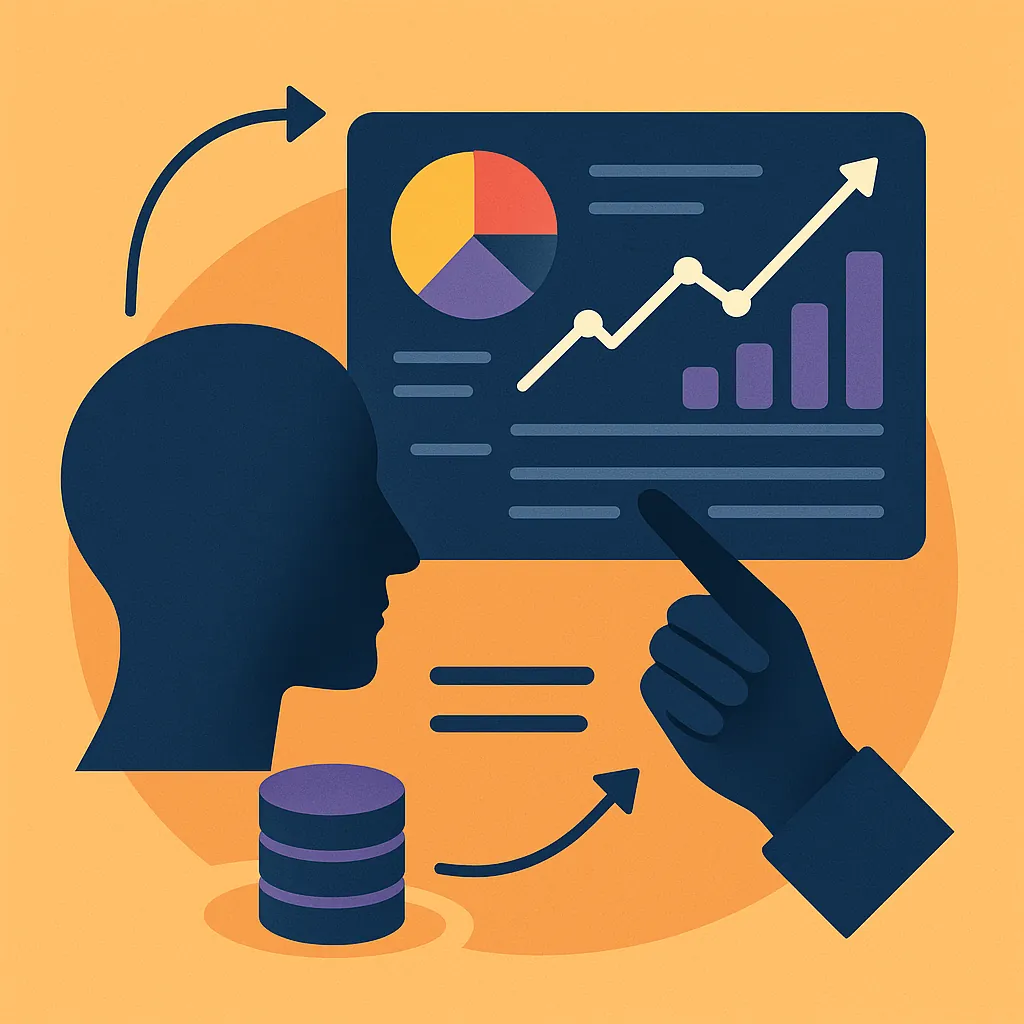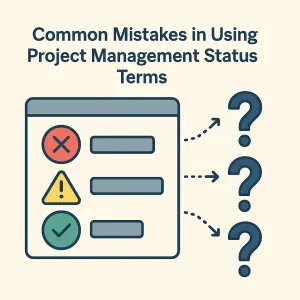Introduction to Data-Driven Decision Making
The ability to make informed decisions is paramount to the success of any initiative. This is where the concept of data-driven decision making (DDDM) comes into play. DDDM refers to the practice of basing decisions on data analysis and interpretation rather than intuition or observation alone. By leveraging quantitative and qualitative data, project managers can gain insights that lead to more effective strategies and outcomes.
Definition of Data-Driven Decision Making
Data-driven decision making involves collecting and analyzing relevant data to guide project decisions. This approach ensures that choices are backed by empirical evidence, which can significantly reduce risks and enhance the likelihood of project success. In project management, this means utilizing metrics and analytics to assess performance, identify trends, and forecast future outcomes.
Importance of Using Data in Project Management
The importance of data in project management cannot be overstated. Here are several key reasons why data-driven approaches are essential:
- Enhanced Accuracy: Data provides a factual basis for decisions, reducing the reliance on guesswork and assumptions. This leads to more accurate project planning and execution.
- Improved Accountability: When decisions are based on data, it becomes easier to track progress and hold team members accountable for their contributions. This transparency fosters a culture of responsibility.
- Informed Risk Management: Data analysis allows project managers to identify potential risks early in the project lifecycle. By understanding these risks, teams can develop mitigation strategies proactively.
- Optimized Resource Allocation: Data helps in understanding resource utilization and performance, enabling project managers to allocate resources more effectively and efficiently.
Overview of How Dashboards Facilitate This Process
Dashboards play a crucial role in the data-driven decision-making process by providing a visual representation of project performance metrics. They aggregate data from various sources and present it in an easily digestible format, allowing project managers and data analysts to:
- Monitor Key Performance Indicators (KPIs): Dashboards can display real-time data on KPIs, helping teams to track progress against project goals and objectives.
- Identify Trends and Patterns: By visualizing data over time, dashboards can reveal trends that may not be immediately apparent, enabling proactive adjustments to project strategies.
- Facilitate Communication: Dashboards serve as a common reference point for all stakeholders, ensuring that everyone is aligned and informed about project status and performance.
- Support Quick Decision Making: With data readily available and visualized, project managers can make timely decisions that keep projects on track and within budget.
Embracing data-driven decision making through the use of dashboards not only enhances project management practices but also empowers teams to achieve better outcomes. By prioritizing data in decision-making processes, project managers can navigate complexities with confidence and clarity.
Understanding Project Charts and Dashboards
Effective visualization of data is crucial for tracking progress, making informed decisions, and communicating with stakeholders. This section delves into the definitions, types, and functionalities of project charts and dashboards, highlighting their importance in data-driven decision-making.
Definition and Types of Project Charts
Project charts are graphical representations of project data that help project managers and teams visualize progress, timelines, and performance metrics. They serve as essential tools for monitoring various aspects of a project. Here are some common types of project charts:
- Gantt Charts: These are bar charts that illustrate a project schedule. Gantt charts display the start and finish dates of various elements of a project, allowing teams to see overlapping tasks and overall project timelines. They are particularly useful for tracking progress against deadlines.
- Burndown Charts: Often used in Agile project management, burndown charts show the amount of work remaining in a project over time. They help teams visualize their progress toward completing tasks and can indicate whether they are on track to meet deadlines.
- Pie Charts: These charts represent data in a circular format, showing the proportion of different categories within a whole. In project management, pie charts can be used to display resource allocation or budget distribution.
- Line Charts: Line charts are useful for showing trends over time, such as project costs or resource usage. They can help project managers identify patterns and make forecasts based on historical data.
Explanation of Dashboards and Their Components
Dashboards are interactive visual displays that consolidate and present key performance indicators (KPIs) and other relevant data in a single view. They are designed to provide a quick overview of project health and performance, enabling project managers to make informed decisions. Key components of dashboards include:
- Data Visualizations: Dashboards often incorporate various types of charts (including those mentioned above) to represent data visually. This allows users to quickly grasp complex information.
- KPIs: Key performance indicators are metrics that reflect the success of a project. Dashboards typically highlight KPIs such as project completion percentage, budget variance, and resource utilization.
- Filters and Interactivity: Many dashboards allow users to filter data by different parameters (e.g., time periods, project phases) and interact with the visualizations to drill down into specific details.
- Real-Time Data: Dashboards can be connected to project management tools and databases, providing real-time updates on project status and performance metrics.
Differences Between Charts and Dashboards
While both project charts and dashboards serve the purpose of visualizing data, they differ in scope and functionality:
- Scope: Project charts typically focus on specific aspects of a project, such as timelines or resource allocation. In contrast, dashboards provide a comprehensive overview of multiple metrics and KPIs, offering a holistic view of project performance.
- Interactivity: Charts are often static representations of data, while dashboards are dynamic and interactive. Users can manipulate dashboards to explore different data sets and gain deeper insights.
- Purpose: The primary purpose of project charts is to convey specific information clearly and concisely, whereas dashboards aim to provide a broader context and facilitate data-driven decision-making by aggregating various data points.
Understanding project charts and dashboards is essential for data analysts and project managers looking to leverage data visualization for effective project tracking and decision-making. By utilizing these tools, teams can enhance their ability to monitor progress, identify issues, and communicate effectively with stakeholders.
Key Performance Metrics to Track with Dashboards
Leveraging dashboards for data-driven decision-making is essential for tracking project performance effectively. Dashboards provide a visual representation of key performance metrics, enabling project managers and data analysts to monitor progress, identify issues, and make informed decisions. Here, we will explore the essential performance metrics that should be monitored using dashboards, how to select relevant metrics based on project goals, and the role of Key Performance Indicators (KPIs) in evaluating project success.
Overview of Key Project Metrics
- Scope:
- Definition: Scope refers to the specific deliverables and outcomes that a project is expected to achieve.
- Importance: Monitoring scope helps ensure that the project remains aligned with its objectives and prevents scope creep, which can lead to delays and increased costs.
- Time:
- Definition: Time metrics track the schedule of project activities, including deadlines and milestones.
- Importance: Keeping an eye on time metrics allows project managers to assess whether the project is on track and to identify any potential delays early on.
- Cost:
- Definition: Cost metrics encompass the budget allocated for the project and the actual expenditures incurred.
- Importance: Monitoring costs is crucial for ensuring that the project remains within budget and for making adjustments if financial overruns occur.
- Quality:
- Definition: Quality metrics evaluate the standards and specifications that the project deliverables must meet.
- Importance: Tracking quality ensures that the project outputs meet the required standards and satisfy stakeholder expectations.
- Stakeholder Satisfaction:
- Definition: This metric assesses how well the project meets the needs and expectations of stakeholders.
- Importance: High stakeholder satisfaction is often a key indicator of project success and can influence future project opportunities.
How to Select Relevant Metrics Based on Project Goals
Selecting the right metrics is critical for effective project tracking. Here are some guidelines to help project managers choose relevant metrics:
- Align with Project Objectives: Metrics should directly relate to the specific goals of the project. For instance, if the goal is to enhance customer satisfaction, metrics related to stakeholder feedback and quality should be prioritized.
- Consider Stakeholder Needs: Engage with stakeholders to understand their priorities and expectations. This will help in selecting metrics that are meaningful to them and that reflect the project’s success from their perspective.
- Focus on Actionable Metrics: Choose metrics that provide insights that can lead to actionable decisions. For example, if a time metric indicates a delay, it should prompt an analysis of the causes and potential solutions.
- Balance Quantitative and Qualitative Metrics: While quantitative metrics (like cost and time) are essential, qualitative metrics (like stakeholder satisfaction) provide a more comprehensive view of project performance.
The Role of KPIs in Evaluating Project Success
Key Performance Indicators (KPIs) are specific, measurable values that demonstrate how effectively a project is achieving its key objectives. Here’s how KPIs play a vital role in project evaluation:
- Benchmarking Performance: KPIs provide a standard against which project performance can be measured. This helps in identifying areas of success and those needing improvement.
- Facilitating Communication: KPIs serve as a common language among project stakeholders, making it easier to communicate progress and challenges.
- Driving Accountability: By establishing clear KPIs, project teams can be held accountable for their performance, fostering a culture of responsibility and continuous improvement.
- Enabling Predictive Analysis: Tracking KPIs over time allows project managers to identify trends and make predictions about future performance, which is crucial for proactive decision-making.
Utilizing dashboards to track key performance metrics is essential for effective project management. By focusing on relevant metrics aligned with project goals and leveraging KPIs, project managers can enhance their decision-making processes and drive project success.
Designing Effective Dashboards for Project Tracking
Dashboards serve as vital tools for visualizing project performance metrics, enabling data-driven decision-making. For data analysts and project managers, creating effective dashboards is essential to ensure that stakeholders can easily interpret and act upon the information presented. Here are some key guidelines and best practices for designing user-friendly and effective dashboards.
Best Practices for Dashboard Design
- Clarity: The primary goal of a dashboard is to convey information clearly. Use straightforward language and avoid jargon that may confuse users. Each element on the dashboard should have a clear purpose, and the layout should guide the viewer’s eye to the most critical data points first.
- Simplicity: A cluttered dashboard can overwhelm users and obscure important insights. Limit the number of metrics displayed to those that are most relevant to the project’s goals. Use white space effectively to separate different sections and make the dashboard more digestible.
- Relevance: Tailor the dashboard to the specific needs of its users. Different stakeholders may require different information; for instance, project managers may focus on timelines and resource allocation, while team members might need updates on task completion. Ensure that the dashboard reflects the key performance indicators (KPIs) that matter most to its audience.
Importance of Data Visualization Techniques
Data visualization is crucial in transforming complex data sets into understandable visual formats. Effective visualization techniques can enhance comprehension and retention of information. Here are some techniques to consider:
- Charts and Graphs: Utilize bar charts, line graphs, and pie charts to represent data trends and comparisons visually. These formats can quickly convey changes over time or the distribution of resources.
- Color Coding: Use color strategically to highlight important data points or to indicate performance levels (e.g., red for underperformance, green for success). This can help users quickly assess the status of various project elements.
- Interactive Elements: Incorporate interactive features that allow users to drill down into specific data points for more detailed insights. This can enhance user engagement and provide a deeper understanding of the data.
Tools and Software for Creating Project Dashboards
Several tools and software options are available for creating effective project dashboards, each offering unique features that cater to different needs:
- Microsoft Power BI: A powerful business analytics tool that allows users to create interactive dashboards and reports. It integrates well with various data sources and offers extensive visualization options.
- Tableau: Known for its robust data visualization capabilities, Tableau enables users to create dynamic and shareable dashboards. It is particularly useful for analyzing large data sets and presenting them in an easily digestible format.
- Smartsheet: This platform combines project management and dashboard capabilities, allowing users to track project progress and visualize key metrics in real-time. Its user-friendly interface makes it accessible for teams of all sizes.
- Google Data Studio: A free tool that allows users to create customizable dashboards using data from various Google services and other sources. It is ideal for teams looking for a cost-effective solution with collaborative features.
By adhering to these guidelines and leveraging the right tools, project managers and data analysts can design effective dashboards that not only track project performance but also facilitate informed decision-making. A well-designed dashboard can be a game-changer in managing projects efficiently and effectively.
Integrating Data Sources for Real-Time Updates
Leveraging dashboards to visualize performance metrics is essential for data-driven decision-making. A critical component of effective dashboards is the integration of various data sources, which allows project managers and data analysts to track project performance in real-time. Here’s how to effectively connect these data sources for optimal project tracking.
Types of Data Sources
- Project Management Tools:
- Tools like Asana, Trello, and Jira are commonly used to manage tasks, timelines, and team collaboration. These platforms often provide built-in reporting features that can be integrated into dashboards.
- They offer APIs that allow for seamless data extraction, ensuring that the latest project updates are reflected in real-time.
- Spreadsheets:
- Many teams still rely on spreadsheets (e.g., Microsoft Excel, Google Sheets) for tracking project metrics. These can serve as a flexible data source for dashboards.
- Spreadsheets can be linked to dashboards through various methods, allowing for easy updates and modifications.
- Time Tracking Tools:
- Tools like Toggl or Harvest can provide valuable data on time spent on tasks, which can be integrated into dashboards to assess productivity and resource allocation.
- Financial Software:
- Integrating financial data from software like QuickBooks or SAP can help project managers track budget versus actual spending, providing insights into financial performance.
Methods for Integrating Data Sources
- APIs (Application Programming Interfaces):
- APIs are the most efficient way to connect different software applications. They allow for automated data transfer between project management tools and dashboards, ensuring that the information is always up-to-date.
- For instance, using RESTful APIs, data can be pulled from various sources and displayed in a unified dashboard format.
- Manual Uploads:
- While not as efficient as API integration, manual uploads can be a viable option for smaller projects or teams that do not have access to API capabilities.
- This method involves exporting data from tools like spreadsheets or project management software and then importing it into the dashboard manually.
- Data Warehousing Solutions:
- For organizations dealing with large volumes of data from multiple sources, data warehousing solutions can aggregate data into a single repository. This data can then be visualized in dashboards.
- Tools like Google BigQuery or Amazon Redshift can facilitate this process, allowing for complex queries and real-time analytics.
Benefits of Real-Time Data for Decision Making
- Enhanced Visibility: Real-time data integration provides project managers with immediate insights into project status, enabling them to identify issues and make informed decisions quickly.
- Improved Responsiveness: With up-to-date information, teams can respond to changes in project scope, timelines, or resources more effectively, minimizing delays and optimizing performance.
- Data-Driven Insights: Real-time dashboards allow for continuous monitoring of key performance indicators (KPIs), leading to better forecasting and strategic planning.
- Collaboration and Accountability: When all team members have access to the same real-time data, it fosters a culture of transparency and accountability, as everyone is aware of project progress and challenges.
Integrating various data sources into dashboards is crucial for effective project tracking. By utilizing APIs, manual uploads, and data warehousing solutions, project managers can ensure that they have access to real-time data, which is essential for making informed decisions and driving project success.
Common Challenges and Solutions in Using Dashboards
Dashboards serve as powerful tools for visualizing project performance metrics. However, their effectiveness can be hindered by several common challenges. Understanding these issues and implementing strategic solutions is crucial for project managers and data analysts aiming to leverage dashboards for data-driven decision-making.
Common Issues
- Data Overload:
- Dashboards can often present an overwhelming amount of information, making it difficult for users to focus on key performance indicators (KPIs). When too much data is displayed, it can lead to confusion and hinder effective decision-making.
- User Resistance:
- Some team members may be resistant to adopting new dashboard tools, either due to a lack of familiarity with the technology or skepticism about its benefits. This resistance can stem from fear of change or a preference for traditional reporting methods.
- Inconsistent Data Sources:
- Dashboards rely on data from various sources, and inconsistencies in data quality or format can lead to inaccurate representations of project performance. This inconsistency can undermine trust in the dashboard’s insights.
- Lack of Customization:
- A one-size-fits-all approach to dashboard design can limit their effectiveness. Different stakeholders may require different views of the data, and a lack of customization options can lead to disengagement.
Strategies to Overcome These Challenges
- Prioritize Key Metrics:
- To combat data overload, project managers should focus on displaying only the most relevant KPIs. This prioritization helps users quickly grasp essential information without being distracted by extraneous data.
- Engage Users Early:
- Involving team members in the dashboard design process can reduce resistance. By soliciting feedback and incorporating user preferences, project managers can create dashboards that meet the specific needs of their teams, fostering a sense of ownership and acceptance.
- Ensure Data Quality:
- Establishing robust data governance practices is essential for maintaining data integrity. Regular audits and validation processes can help ensure that the data feeding into the dashboard is accurate and consistent, thereby enhancing trust in the insights provided.
- Offer Customization Options:
- Providing users with the ability to customize their dashboard views can significantly improve engagement. Allowing stakeholders to select which metrics they want to see and how they want to visualize them can make the dashboard more relevant and user-friendly.
Importance of Training and User Engagement
Training is a critical component in maximizing the effectiveness of dashboards. Project managers should invest in comprehensive training programs that not only cover the technical aspects of using the dashboard but also emphasize the importance of data-driven decision-making.
- User Engagement: Continuous engagement with users through workshops, feedback sessions, and updates can help maintain interest and encourage the adoption of dashboard tools. By fostering a culture of data literacy, organizations can empower their teams to utilize dashboards effectively.
- Iterative Improvement: Regularly revisiting and refining dashboard designs based on user feedback ensures that the tools remain relevant and useful. This iterative approach can help address any emerging challenges and adapt to changing project needs.
While dashboards present unique challenges in project management, proactive strategies and a focus on user engagement can significantly enhance their effectiveness. By addressing issues such as data overload, user resistance, and data quality, project managers can leverage dashboards to drive informed decision-making and improve overall project performance.
Conclusion: The Future of Project Management with Dashboards
The integration of data-driven decision-making has become paramount. Dashboards serve as powerful tools that enable project managers and data analysts to visualize performance metrics effectively, facilitating informed decisions that can significantly enhance project outcomes. Here are the key points to consider regarding the future of project management with dashboards:
- Recap of the Importance of Data-Driven Decision Making: The reliance on data to guide project decisions is no longer optional; it is essential. By utilizing dashboards, project managers can access real-time data, track progress against key performance indicators (KPIs), and identify potential issues before they escalate. This proactive approach not only improves efficiency but also fosters a culture of accountability and transparency within project teams.
- Future Trends in Project Management Dashboards: As technology continues to advance, we can expect several trends to shape the future of project management dashboards:
- Increased Customization: Dashboards will become more tailored to individual project needs, allowing users to select the metrics that matter most to them.
- Enhanced Data Integration: Future dashboards will likely integrate data from various sources, providing a holistic view of project performance and enabling more comprehensive analysis.
- Predictive Analytics: The incorporation of AI and machine learning will allow dashboards to not only display historical data but also predict future trends, helping project managers make proactive adjustments.
- Mobile Accessibility: With the rise of remote work, dashboards will increasingly be optimized for mobile devices, ensuring that project managers can access critical information anytime, anywhere.
The future of project management is bright with the integration of dashboards. By prioritizing data-driven decision-making and staying ahead of emerging trends, project managers and data analysts can ensure that their projects are not only successful but also set a standard for excellence in the industry.
Find out more about Shaun Stoltz https://www.shaunstoltz.com/about/.
This post was written by an AI and reviewed/edited by a human.



